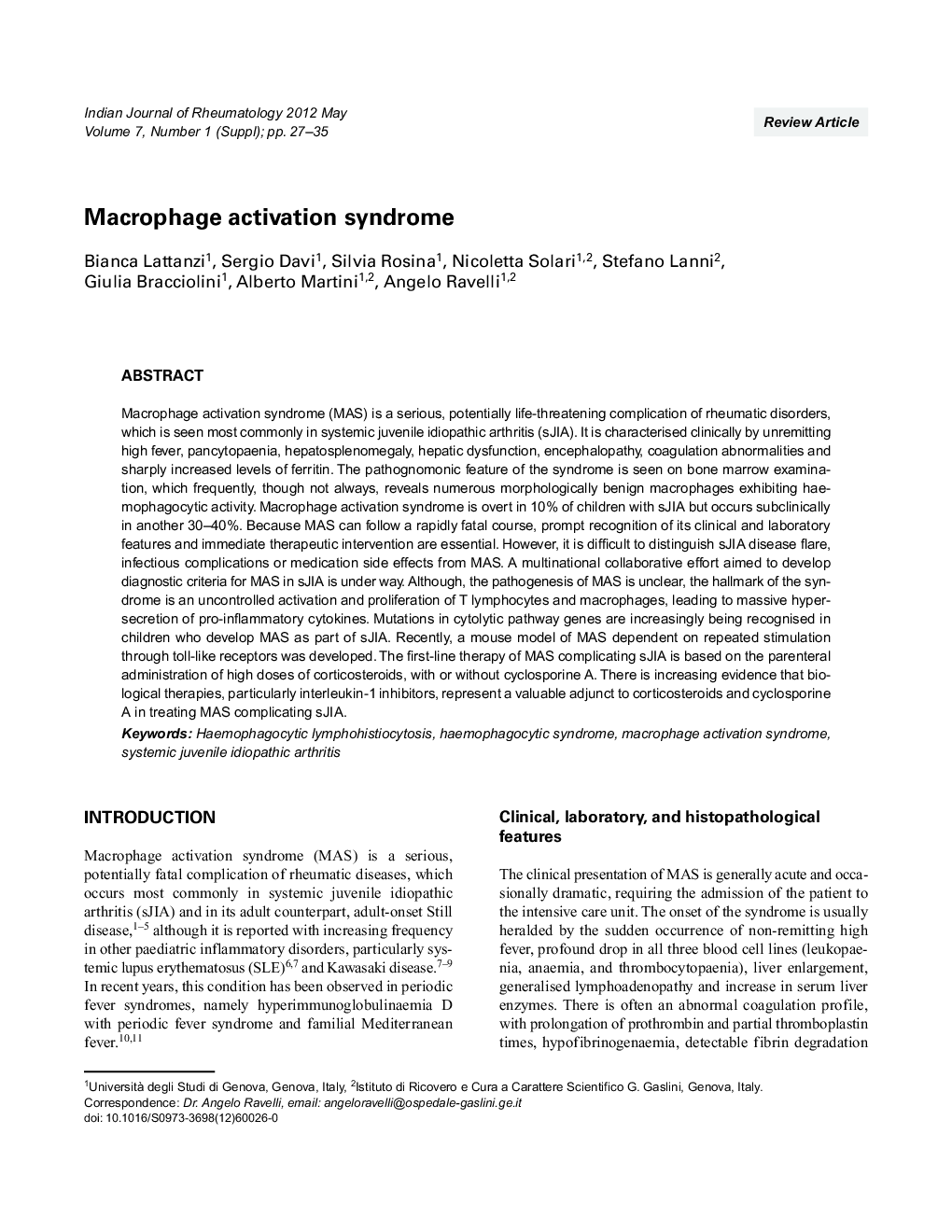| Article ID | Journal | Published Year | Pages | File Type |
|---|---|---|---|---|
| 3357572 | Indian Journal of Rheumatology | 2012 | 9 Pages |
Macrophage activation syndrome (MAS) is a serious, potentially life-threatening complication of rheumatic disorders, which is seen most commonly in systemic juvenile idiopathic arthritis (sJIA). It is characterised clinically by unremitting high fever, pancytopaenia, hepatosplenomegaly, hepatic dysfunction, encephalopathy, coagulation abnormalities and sharply increased levels of ferritin. The pathognomonic feature of the syndrome is seen on bone marrow examination, which frequently, though not always, reveals numerous morphologically benign macrophages exhibiting haemophagocytic activity. Macrophage activation syndrome is overt in 10% of children with sJIA but occurs subclinically in another 30–40%. Because MAS can follow a rapidly fatal course, prompt recognition of its clinical and laboratory features and immediate therapeutic intervention are essential. However, it is difficult to distinguish sJIA disease flare, infectious complications or medication side effects from MAS. A multinational collaborative effort aimed to develop diagnostic criteria for MAS in sJIA is under way. Although, the pathogenesis of MAS is unclear, the hallmark of the syndrome is an uncontrolled activation and proliferation of T lymphocytes and macrophages, leading to massive hypersecretion of pro-inflammatory cytokines. Mutations in cytolytic pathway genes are increasingly being recognised in children who develop MAS as part of sJIA. Recently, a mouse model of MAS dependent on repeated stimulation through toll-like receptors was developed. The first-line therapy of MAS complicating sJIA is based on the parenteral administration of high doses of corticosteroids, with or without cyclosporine A. There is increasing evidence that biological therapies, particularly interleukin-1 inhibitors, represent a valuable adjunct to corticosteroids and cyclosporine A in treating MAS complicating sJIA.
